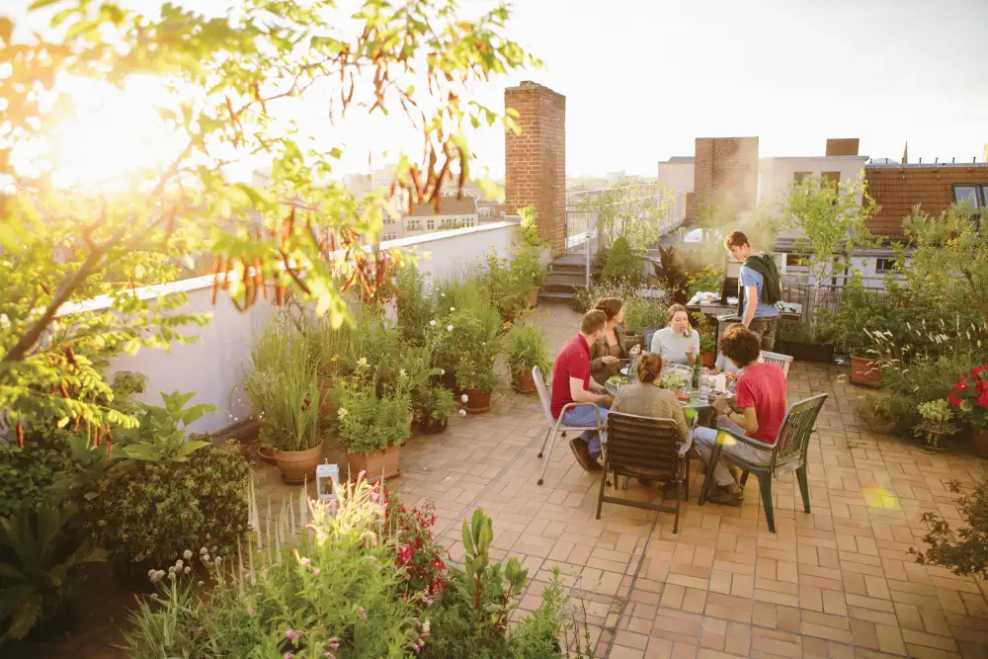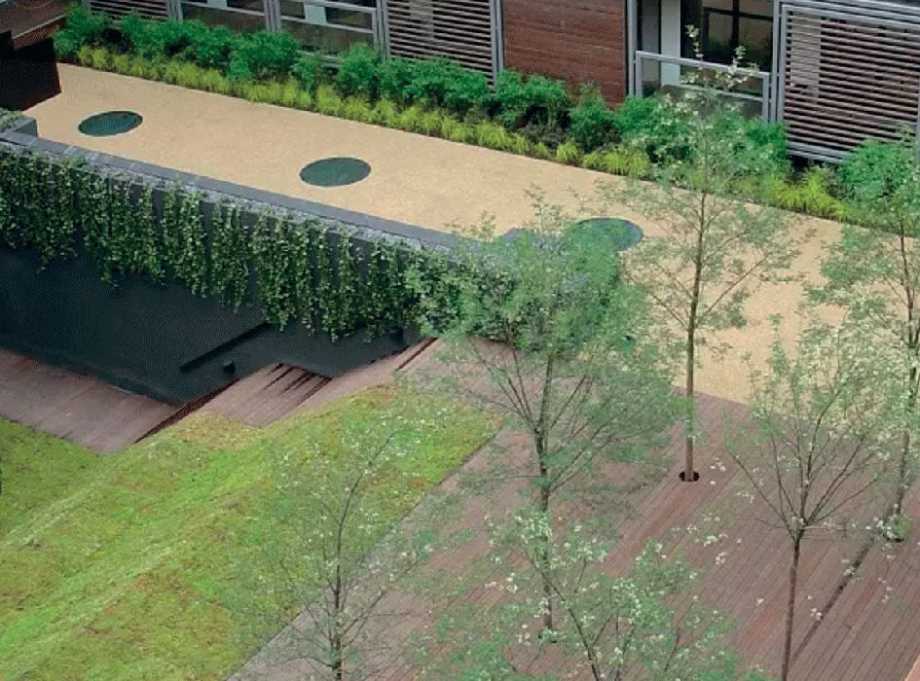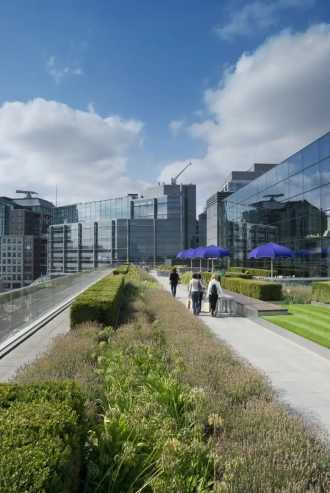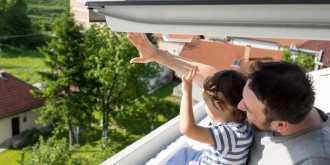Our country pages
Africa
Europe
Search
A new home concept

Share article:
Revising the concept of space
We have all heard the expression "social distancing" (perhaps more correct is the phrase "physical distancing") repeated incessantly in recent years.
It was a concept that reminded everyone of how frequent overcrowding and excessive concentration of people and activities (even harmful ones) in unified places are, which can be observed with great prominence in both public and private spaces and are often determined by economic and market logics.
The importance of creating new urban green areas has not always been given due importance: allotments are generally exploited to define new urban neighbourhoods, to the detriment of health, healthy urban habitat, outdoor recreation, sports and leisure activities, and children's play. Many of the newer dwellings have been designed according to minimalist standards, with rooms and spaces often limited in size.
The Coronavirus made this situation explode, and the criticism attached to it: it showed us very clearly the importance of the home and its open surroundings, the need to live in comfortable spaces in terms of size and living quality, and called for new connections with the outside world.
So if we have been talking about revising urban spaces and neighbourhoods for a long time, perhaps the time has come to actually do it, with new urban policies that are more attentive to health, mobility, different modes of greenery, quality, and services: concepts that affect our social identity and personal and collective well-being. With the pandemic, we realized their role because we started to go to parks and gardens again. We rediscovered terraces, balconies, courtyards, which we had not used for a long time. And we quickly "got our hands" on second homes, which were always more exotic destinations, but in the pandemic phase, we were more comfortable with a bit of lawn.
In the city too, everything possible was extended outdoors: bars, restaurants, shops with a terrace outlet, shop windows, extensions under the arcades. The home did the same, through the use of loggias, porches, balconies.
We came to realize, as was once the case in out-of-town residences, how healthy and pleasant the interior's dialogue with the outside is, even if only through large windows and openings.
Jump to section
The parameters of the future home
It is certainly not excessive to speak of a "revolution in the concept of home": this, long debated in many areas, may lead to new ways of living, which hopefully will be established over time and have to deal with certain principles that we can try to lay down.
If we refer to multi-family realities, the need for larger and more flexible private spaces has been recognised: furniture can help us to quickly change domestic places into workplaces. It is apparent thathome working and smart learning, now much criticised for overuse, will become more common and frequent. Companies have been experimenting with "working from home" for a long time, even on an occasional basis, because there are many advantages. Although at first we were lost in this excessive isolation, we struggled to distinguish between times of work and times of rest, we were confronted with the difficulty of concentrating at home to carry out those activities that we normally performed at school, university or the office, we nevertheless valued the time previously wasted in traffic jams or in city traffic, the reduction in transport costs and enjoyed "comfortable" work in a generally comfortable and quiet place. It is estimated that these patterns will persist.
It will be crucial:
to have large, communal spaces that can be used collectively but can also be easily sanitised if necessary;
the use of courtyards and surrounding green areas;
have easy access to technological connections, as without them today we are cut off from everything.
Similar attention is focused on the home, which is once again given the role of "nest", haven: that comfortable and sufficiently large space that generates psychological and physical well-being. Something very different from the dormitory spaces that too many have had to deal with, perhaps not even being able to escape to nearby open spaces. But today the home is also an extension of the office or school and this new role must be taken into account.
For this reason, the home must be organised and flexible: be characterised by separate spaces for work and leisure and, if this is not possible, be provided with organisational flexibility and modularity to allow for balanced changes of use, transforming itself according to the needs of the moment and allowing the people living in it to carry out their tasks without disturbing each other.
Having a small (or large) communal open space has become vital again: in the city, balconies and terraces make for an only smaller but equally necessary version.
What about comfort? Places where air quality, the right temperature conditions depending on the season, humidity and silence are essential conditions.
Today, we have the technical knowledge, supporting regulations, materials and technological solutions to configure new dwellings in line with this new living culture, where habitability, liveability, functionality, layout, exposure and orientation can be defined with great accuracy; similarly, we can work on existing buildings, transforming them into modern, comfortable dwellings.
Even the roof helps us live better with new modern roof design
One should feel good at home and it is even better if we have, as already mentioned, outdoor space. These help us to live harmoniously, to enjoy free moments but also to conduct a minimum of physical activity to compensate for the long hours spent at the desk. They can also become places for play and recreation.
We have often underestimated the roof as a usable place: it is usually a place we forget about, where we don't go, that only requires maintenance.
But the roof can be much more, especially if it is flat.
During the pandemic, many apartment buildings were reminded of its presence and started to use it. One can think of "functionally and constructively revising it" in order to use it permanently as an additional ancillary space, making it beautiful and functional.
We can first of all make it energy efficient if houses are extended underneath, making them more comfortable and less energy-consuming.
But we can also use it not only as a "technical space" in which air conditioners, lift towers and so on find their place. On the roof, sometimes large and protected, we can in fact establish:
habitable terraces
recreational places for games and sports (table tennis, gymnastics, fitness, ...)
relaxation spaces, reading, listening to music
gardens
home gardens


By organising these activities, we not only provide additional effective living space, but we determine formally more inviting and pleasant, quiet, traffic-free settings.
Of the benefits of green roofs, then, we have written many times, mentioning the improvement in microclimate, energy, absorption of pollutants, and mitigation of rain actions.
The roof can provide a place for recreation, contact with the environment and for relationships; needless to say, even the real estate market is once again rewarding houses in the countryside, which in past years were snubbed because they were far from services and needed a lot of maintenance. Green roofs are a valid alternative, it allows you to respond adequately to these “new” housing needs and increases the real estate value of your home.
BMI can come to your aid in redesigning your flat roof, with appropriate waterproofing and efficiency solutions and finishing proposals that will allow you to experience your roof as an open space at the top.
Contact Us
Contact our local team
We can support you to define solutions and services for specific country.
Media Contact
Contact us for more information on BMI Group
group.communications@bmigroup.com


